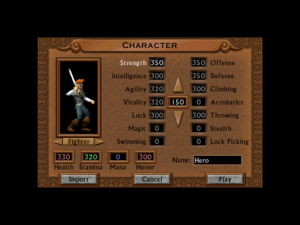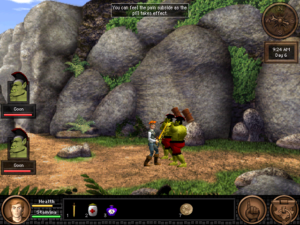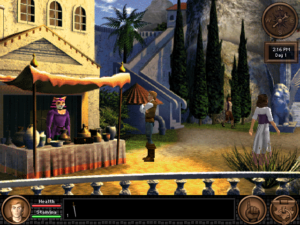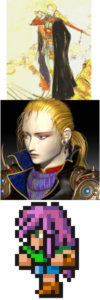QfG5: Starting Over
In an adventure game, the player’s focus is on figuring things out. Once you’ve solved a puzzle, it’s effectively solved, not just for that session, but for any session thereafter, even if you have to start over from scratch: you may have to go through the motions in the game again, but the figuring-out only has to be done once. (And sometimes you don’t even have to go through the motions, if the only reward for solving a puzzle is information useful elsewhere in the game. Myst took this to an extreme, letting players with the right knowledge skip most of the game’s content.)
In a CRPG, the player’s focus is on going through the motions. There may be puzzles to solve and tactics to figure out, but these are usually stuck into a context of grinding. Progress in one of these games doesn’t necessarily present any challenge at all to the player beyond investment of time. You lose that investment if you start over, or even just go back to an earlier save.
So it says something about which aspect of Quest for Glory V is dominant that I started over without really needing to. I had managed to reach the point in the plot where Magnum Opus gets murdered a couple of days before I was scheduled to duel him in the arena, thus cheating myself out of the five points (out of a maximum 1000) that I would have gotten for trouncing him. I’ve been saving the game at the start of every in-game day, and thus could have figured out what the last point was that I could have salvaged this, but nah, that’s too much effort. Better to start over.
And, having started over, I’m doing things much more efficiently. A lot of the puzzle content can be taken care of on day 1 if you know what you’re doing, freeing up the rest of your time for maxing your stats — and, in fact, maxing your stats doesn’t take all that long either, so at this point I’m basically just marking time until I fight Magnum Opus. Eventually I’ll have to start the Rite of Rulership, and with it, the rest of the plot. But until I pull that trigger, the game seems to be in a plot-development-free zone. Whether this lasts forever or not, I don’t yet know. I was told at the beginning that my associates had paid my rent at the inn for a month, so that may be the point at which things come crashing down. On the other hand, the looming threat — the gradual destruction of the anti-dragon wards — seems to be dependent on plot events that only occur during the Rite, so I don’t know how the doom of the city would occur before then. Maybe it’s those invading mercenaries; maybe if I go and sleep at the inn for another couple of weeks without driving them off as part of the Rite, they’ll finally storm the city. But I doubt it.
If I were any kind of real hero, I wouldn’t enter the Rite at all. Let the city stay in its starting state indefinitely, with the defenses intact and no additional murders. So what if they don’t have a king? These guys are pseudo-ancient-Greeks; they should be capable of inventing democracy.
 Comments(0)
Comments(0)



